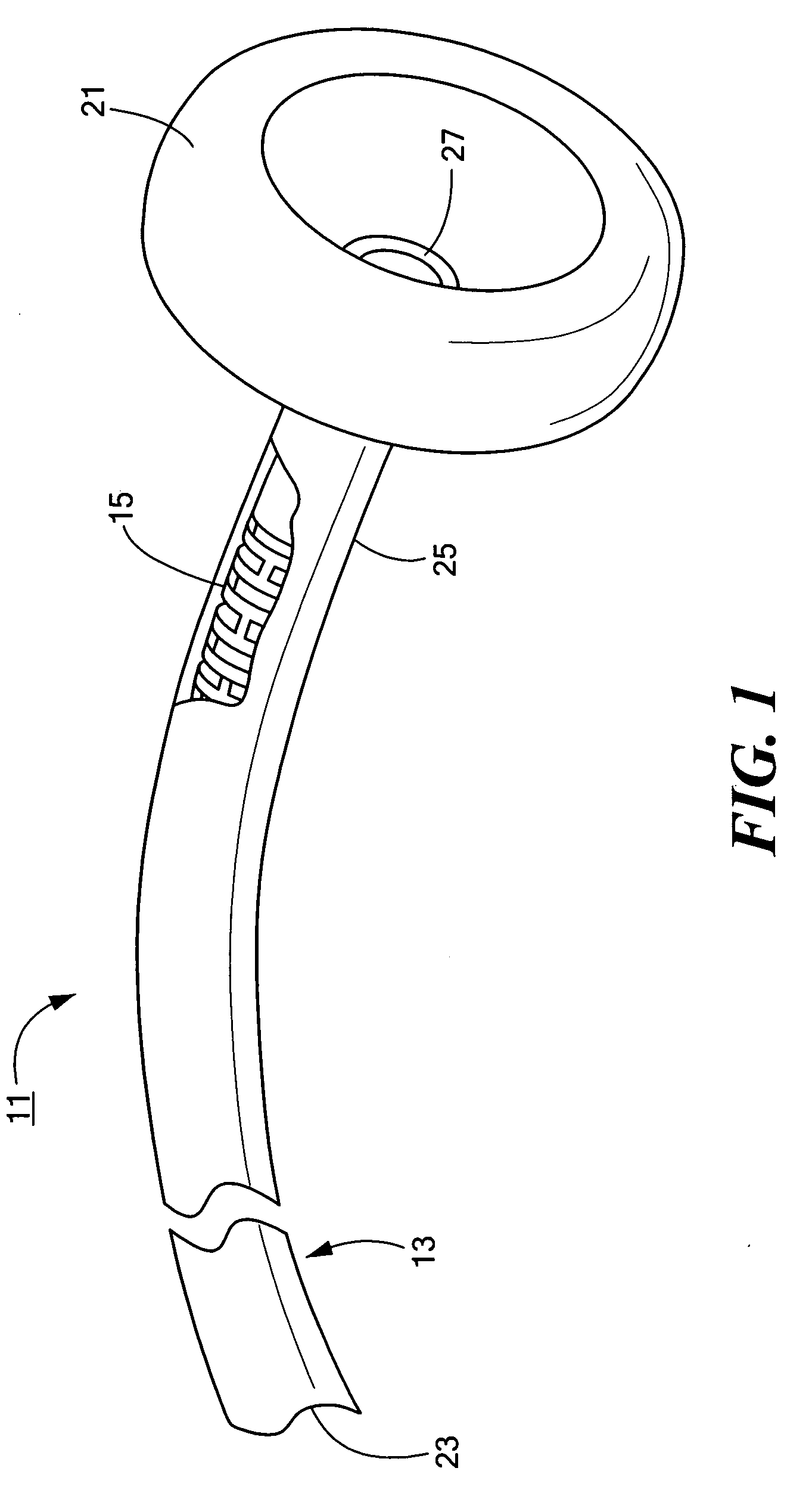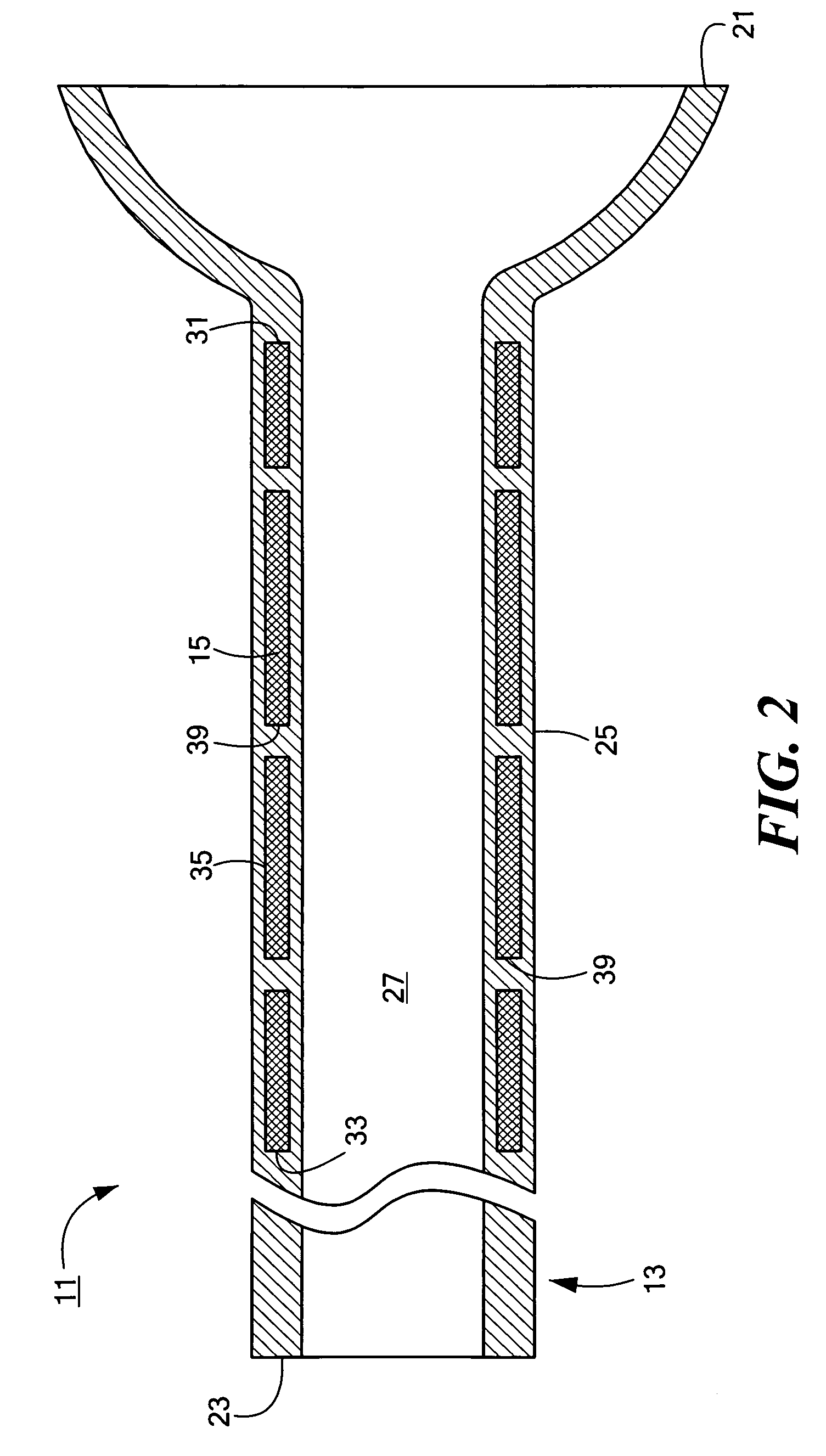Catheter assembly with increased torsional stiffness
a technology of torsional stiffness and catheter, which is applied in the field of catheters, can solve the problems of affecting and causing adhesion, etc., and achieves the effects of increasing the torsional stiffness of catheters, and decreasing the flexibility of medical catheters
- Summary
- Abstract
- Description
- Claims
- Application Information
AI Technical Summary
Benefits of technology
Problems solved by technology
Method used
Image
Examples
Embodiment Construction
[0023]Referring now to FIGS. 1 and 2, there are shown fragmentary, perspective and fragmentary, longitudinal, section views, respectively, of a catheter assembly constructed according to the teachings of the present invention, said catheter assembly being represented generally by reference numeral 11.
[0024]Assembly 11 comprises a medical catheter 13 and a torsional stiffener 15.
[0025]Catheter 13, which may comprise a soft, flexible, biocompatible material, such as a low durometer polyurethane, nylon or silicone rubber, may be an elongated, cylindrical member shaped to include a first end 21, a second end 23, a side wall 25 and a longitudinal bore 27. (The flexibility of catheter 13 may also be affected by material thickness, by material fillers and / or by combined materials.) In the present embodiment, catheter 13 is a gastrostomy or jejunostomy feeding tube, and first end 21, which is intended to be implanted within a patient, is shaped to include an integrally-formed, dome-shaped, ...
PUM
| Property | Measurement | Unit |
|---|---|---|
| Density | aaaaa | aaaaa |
| Flexibility | aaaaa | aaaaa |
| Shape memory effect | aaaaa | aaaaa |
Abstract
Description
Claims
Application Information
 Login to View More
Login to View More - R&D
- Intellectual Property
- Life Sciences
- Materials
- Tech Scout
- Unparalleled Data Quality
- Higher Quality Content
- 60% Fewer Hallucinations
Browse by: Latest US Patents, China's latest patents, Technical Efficacy Thesaurus, Application Domain, Technology Topic, Popular Technical Reports.
© 2025 PatSnap. All rights reserved.Legal|Privacy policy|Modern Slavery Act Transparency Statement|Sitemap|About US| Contact US: help@patsnap.com



